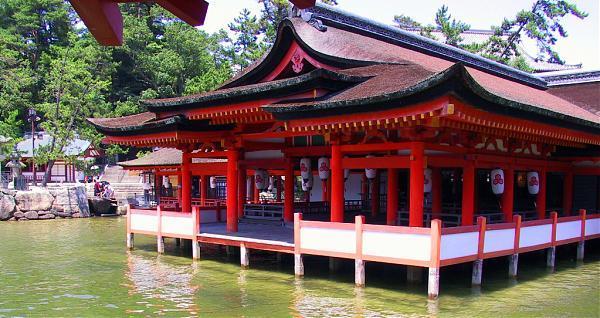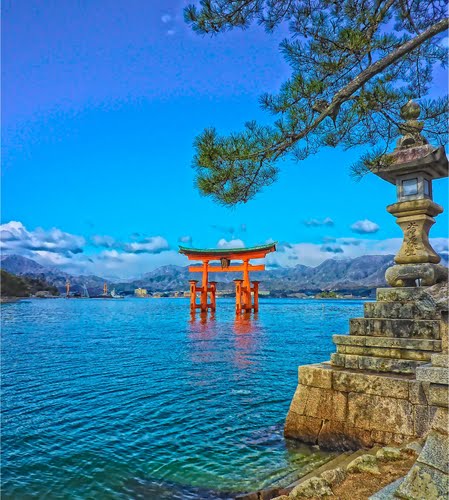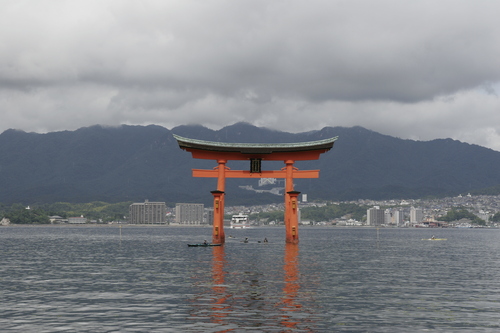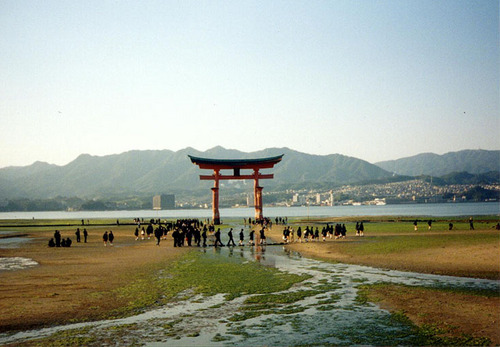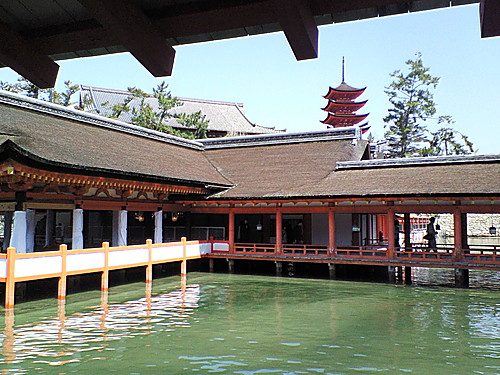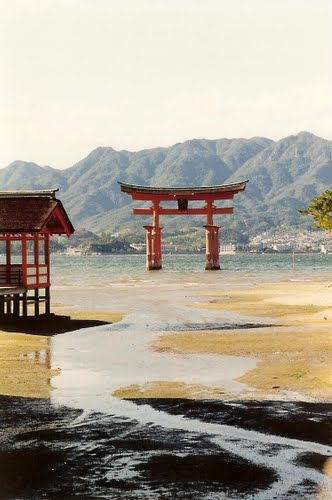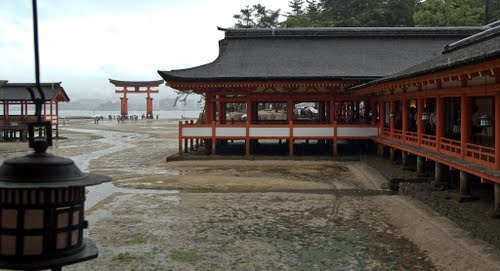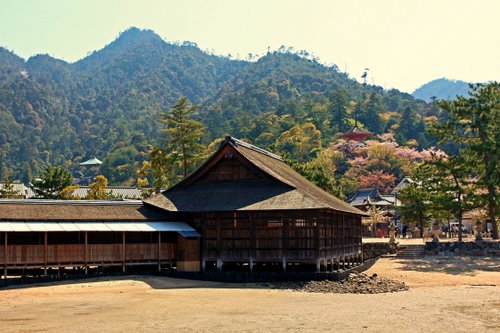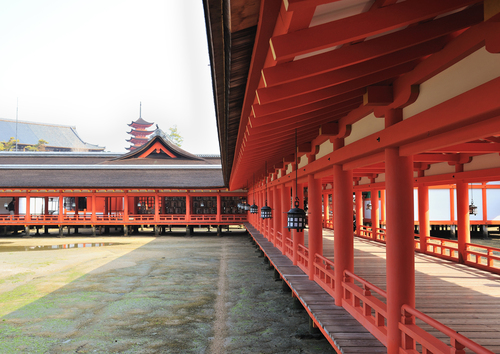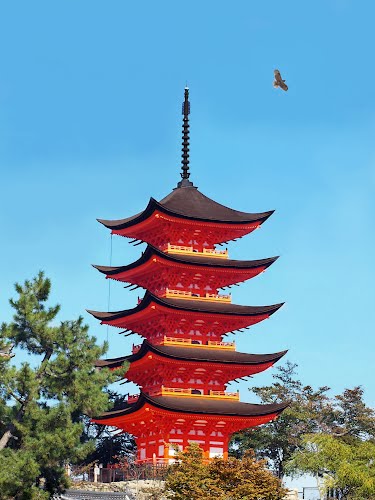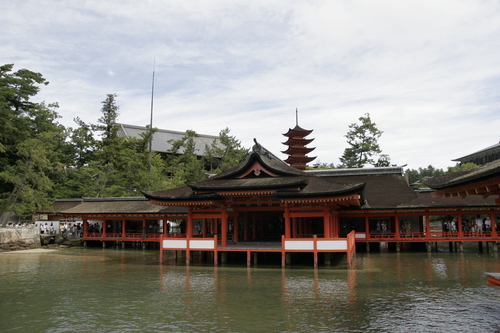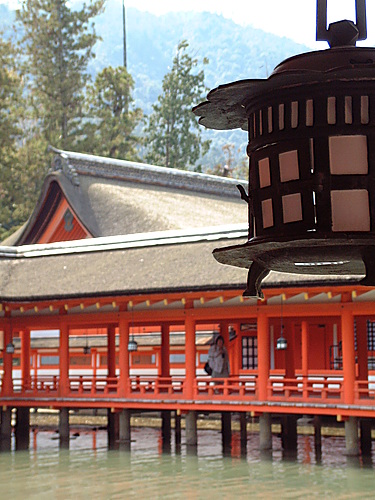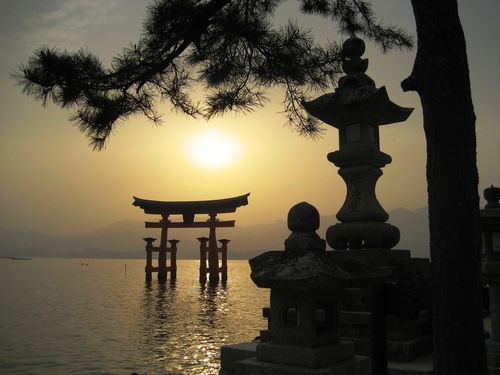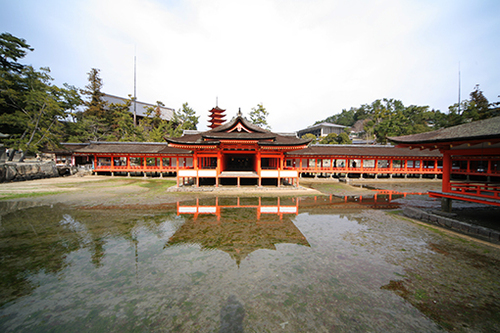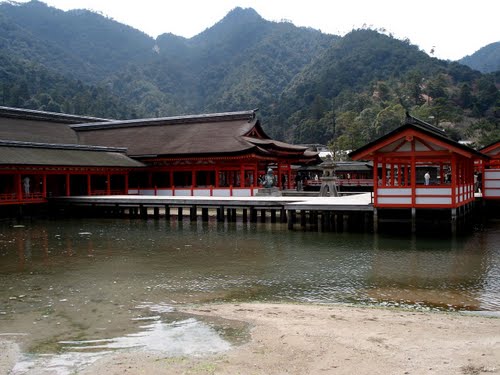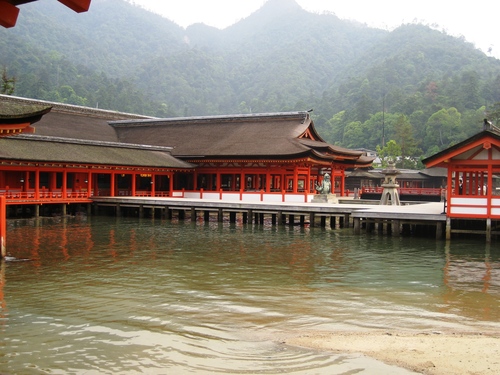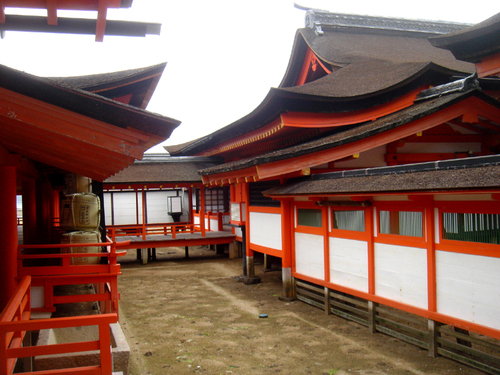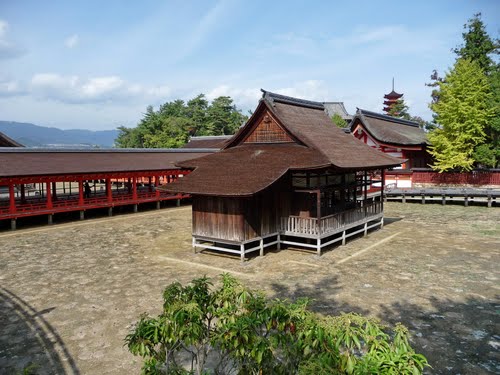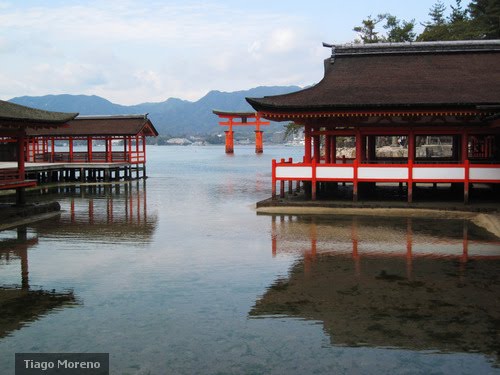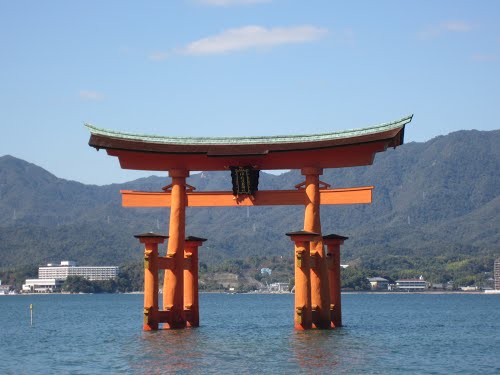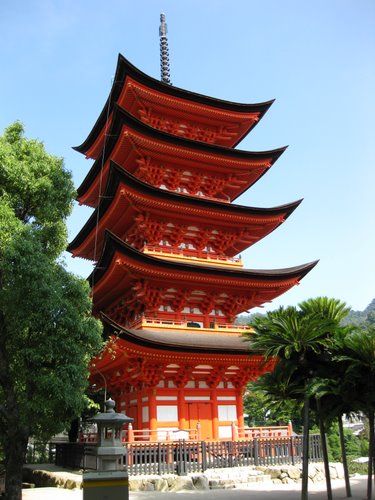Itsukushima Shrine is a Shinto shrine on the island of Itsukushima, best known for its "floating" torii gate. It is in the city of Hatsukaichi in Hiroshima Prefecture in Japan. The shrine complex is listed as a UNESCO World Heritage Site, and the Japanese government has designated several buildings and possessions as National Treasures.
History
The shrine has been destroyed several times, but the first shrine buildings were probably erected in the 6th century. The present shrine dates from the mid-16th century, and is believed to follow an earlier design from the 12th century. That design was established in 1168, when funds were provided by the warlord Taira no Kiyomori.
The shrine was "devoted to the worship of goddesses to whom Kiyomori owed thanks, he felt, for his success in life." Originally it was a pure Shinto shrine "where no births or deaths were allowed to cause pollution. Its treasures include the celebrated Heike Nokyo, or 'Sutras dedicated by the Taira House of Taira'. These consist of thirty-two scrolls, on which the Lotus and other sutras have been copied by Kiyomori, his sons, and other members of the family, each completing the writing of one scroll. Kiyomori lavished great wealth upon Itsukushima, and he liked to show the place to his friends and colleagues, or even to royal personages..."
The shrine was designed and built on pier-like structures over the bay so that it would appear to be floating on the water, separate from the sacred island, which could be approached by the devout.
Near the main shrine is a noh stage which dates from 1590. Noh theater performances have long been used to pay homage to the gods through the ritual acting out of key events in Shinto myth.
The dramatic gate, or torii, of Itsukushima Shrine is one of Japan's most popular tourist attractions, and the most recognizable and celebrated feature of the Itsukushima shrine, and the view of the gate in front of the island's Mount Misen is classified as one of the Three Views of Japan. Although a gate has been in place since 1168, the current gate dates back only to 1875. The gate, built of decay-resistant camphor wood, is about 16 metres high. The placement of an additional leg in front of and behind each main pillar identifies the torii as reflecting the style of Ryobu Shinto, a medieval school of esoteric Japanese Buddhism associated with the Shingon Sect.
The torii appears to be floating only at high tide. When the tide is low, it is approachable by foot from the island. Gathering shellfish near the gate is also popular at low tide. At night, powerful lights on the shore illuminate the torii.
On September 5, 2004, the shrine was severely damaged by Typhoon Songda. The boardwalks and roof were partially destroyed, and the shrine was temporarily closed for repairs.

